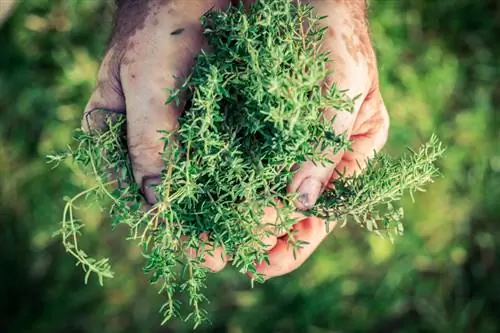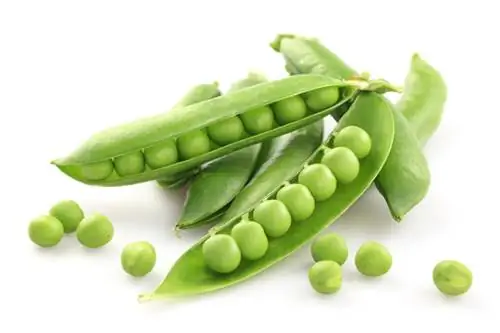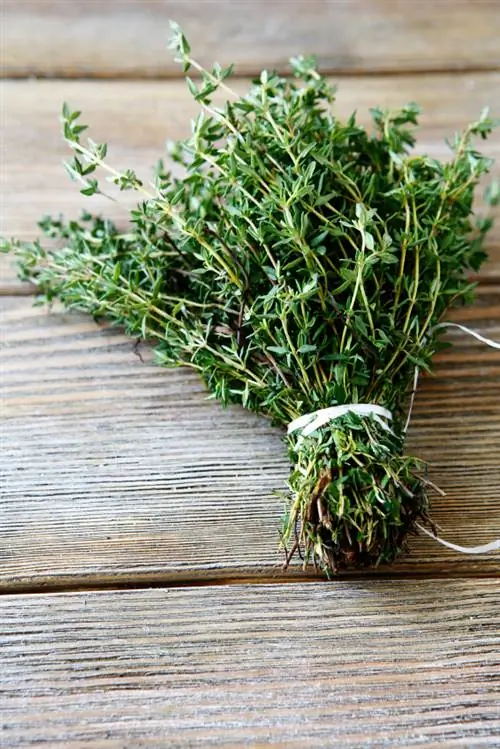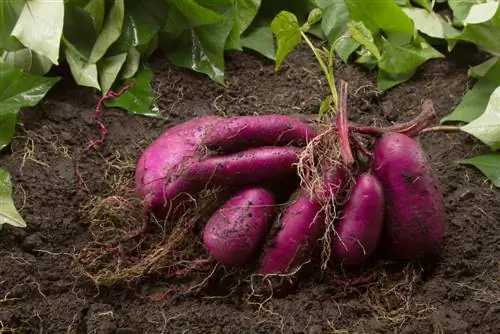- Author admin [email protected].
- Public 2023-12-16 16:46.
- Last modified 2025-01-23 11:20.
Evergreen herbs like thyme can be harvested all year round. To do this, pick the leaves at any time during the growth phase. However, make sure that you only harvest a few shoots from around mid to late August, as these must now be able to harden off in time before winter. In order to survive the cold season without damage, thyme needs mature shoots - just like the other winter-hardy Mediterranean herbs.
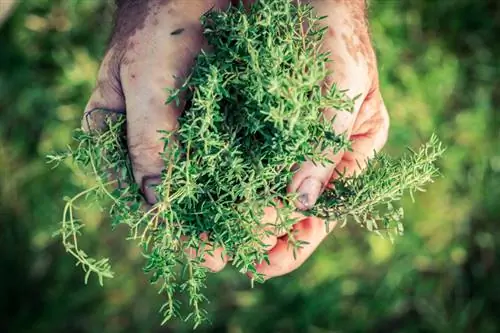
When is the best time to harvest thyme?
It is best to harvest thyme in the late morning or at lunchtime, shortly before the plant flowers, as this is when the flavor and essential oils are most intense. Harvest sparingly after mid-August so that the shoots harden for the winter.
The right harvest time
Harvest the leaves either in the late morning or at midday, after the dew has evaporated from the leaves. The leaves have the most flavor immediately before flowering and also contain the highest concentrations of valuable essential oils at this time. When harvesting flowers, pick them at midday in dry weather when the flower begins to fully open.
Collecting seeds
Collect the seeds on a warm, dry day when they are hard and ripe. You can dry them and store them in a paper bag over the winter until you can finally sow them in early spring. This way you can grow your thyme plants yourself and don't have to constantly buy new seeds or young plants. In addition, thyme can be propagated very well via offshoots, cuttings and also by division.
Cutting thyme
Thyme is a perennial plant and as such becomes woody over time. For this reason, regular harvesting of the plant also represents care that counteracts woodiness and thus baldness. Therefore, make sure to prune thyme evenly - after all, you want it to retain its beautiful, bushy shape - and, above all, to remove older shoots. Do not cut into the woody parts, as new branches usually no longer grow from them. Harvest regularly as this keeps the plants compact and bushy and also encourages new, fresh and flavorful shoots. The actual topiary takes place in spring.
The best place for a herb garden
If possible, don't plant your herb garden too far from the kitchen. It is much more pleasant to simply open the window or just step outside the kitchen door and pick a handful of fresh thyme or other herbs than to walk to the back of the garden in the pouring rain. Thyme also does very well in pots, because the Mediterranean plant likes the well-drained conditions in such planters. It is entirely possible to create a useful and attractive herb garden in small planting containers that will produce easily accessible herbs on a windowsill in the sun all year round.
Store harvested thyme properly
You should either use thyme that has just been harvested immediately or, if you do not need it immediately after picking, preserve it as quickly as possible. Otherwise, the valuable essential oils will evaporate and the herb will lose both its aromatic and healing properties. Therefore, make sure that your harvested herbs are stored loosely and that enough air can circulate around them so that they are not squeezed, crushed or otherwise damaged before use or further processing. Traditional wicker baskets are ideal for this purpose.
Tips & Tricks
The active substances that naturopaths use for medical purposes are usually highest in the second and third year of perennial herbs such as thyme, after which the concentration decreases again. Therefore, if possible, a thyme plant should not be cultivated for longer than three to four years.

